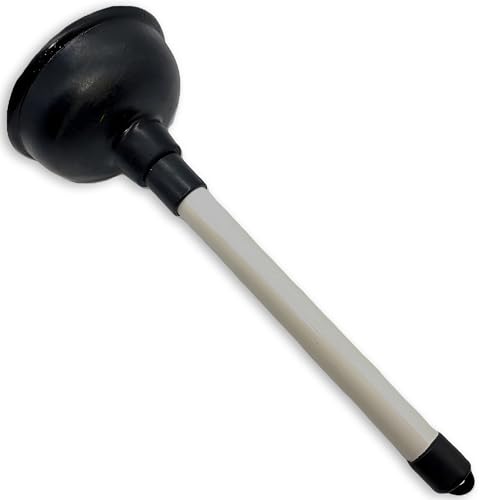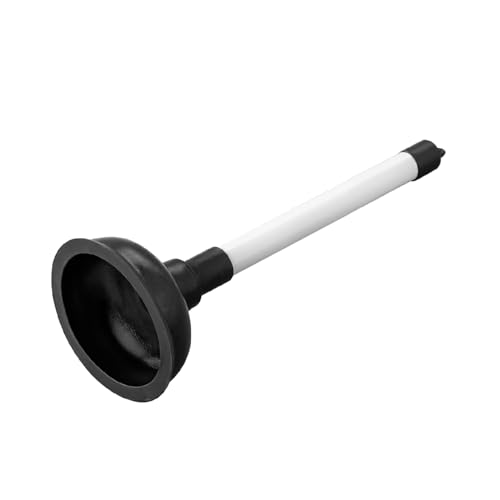Yes, plungers can be used to remove hair from drains
Plungers are typically used to unclog toilets or kitchen sinks, but they can also be effective in removing hair from drains. Hair buildup is a common cause of clogged drains, especially in showers and bathroom sinks. By using a plunger, you can create suction that helps dislodge the hair and clear the drain. However, it is important to use the plunger correctly and take precautions to ensure the process is safe and effective.
How to use a plunger to remove hair from drains
To use a plunger for hair removal, follow these steps:
- Remove any standing water from the drain. If there is a significant amount of water, you may need to use a bucket or cup to scoop it out.
- If the drain has a removable stopper or cover, remove it to access the hair buildup.
- Place the plunger over the drain, ensuring a tight seal. Push down firmly and pull up quickly, creating suction that can dislodge the hair.
- Repeat the plunging motion several times, until you feel the obstruction loosen or the water begins to drain more freely.
- After plunging, run hot water down the drain to flush out any remaining debris. You may also consider using a drain cleaner or a mixture of baking soda and vinegar to further clear the drain.
Precautions when using a plunger
While using a plunger to remove hair from drains can be an effective method, it is important to take some precautions:
- Wear rubber gloves to protect your hands from any bacteria or dirty water that may be present in the drain.
- Ensure a tight seal between the plunger and the drain to create effective suction. You can apply petroleum jelly to the rim of the plunger to create a better seal.
- Avoid using excessive force when plunging, as this may damage the pipe or cause the obstruction to become more tightly lodged.
- If the hair clog is severe or persistent, it is recommended to call a professional plumber for assistance.
Alternative methods for removing hair from drains
If plunging is not effective in removing the hair from the drain, there are alternative methods you can try:
- Using a drain snake or auger: This tool can be inserted into the drain to physically remove the hair clog. It is important to follow the instructions and use the tool carefully to avoid causing any damage to the pipe.
- Using a chemical drain cleaner: There are various chemical drain cleaners available that can dissolve hair and other debris. However, these products can be harsh and may damage the pipes, so it is important to follow the instructions and use them sparingly.
- Hiring a professional plumber: If all else fails, it is best to call a professional plumber for assistance. They have the tools and expertise to effectively remove the hair clog and ensure the drain is clear.
Preventing hair clogs in drains
To prevent future hair clogs in drains, consider implementing these preventive measures:
- Install drain covers: These can catch the hair before it enters the drain and prevent clogs. Make sure to clean the drain covers regularly to remove any collected hair.
- Brush or comb hair before showering: Removing loose hair before showering can help reduce the amount that ends up in the drain.
- Use a hair catcher in the shower: These small mesh devices can be placed over the drain to catch hair and prevent it from going down the drain.
- Regularly clean the drains: Once a month, pour boiling water down the drains to help flush out any hair or debris. Additionally, you can use a mixture of baking soda and vinegar to keep the drains clean and clear.






